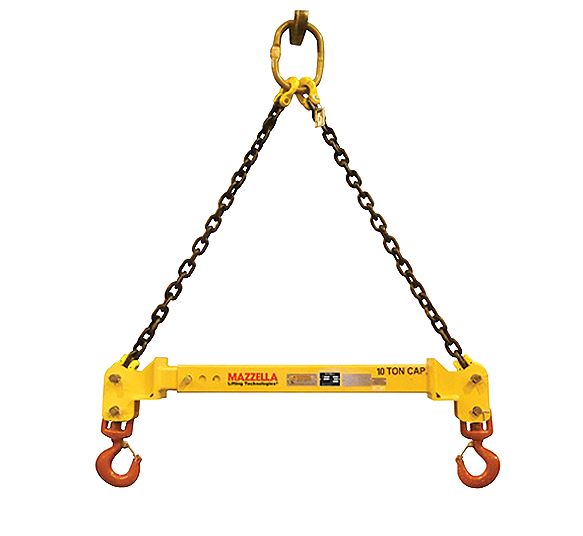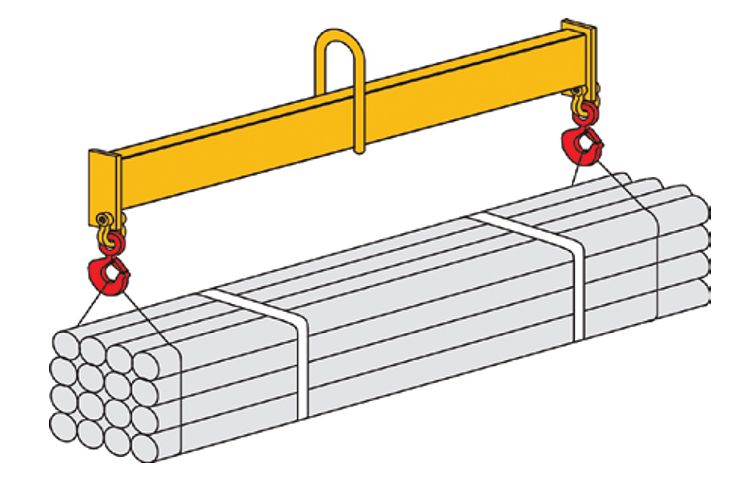  
Spreader Bars and Lifting Beams
Spreader Bars and Lifting Beams are used when it is desirable to lift and object with 2 slings where using angled slings from the hook isn't appropriate.
This could be because of the possibility of damaging the object with angled slings.
It is more commonly needed because the angled slings may slide along the object when lifted.
Many times these devices are adjustable to allow for positioning the hook over the center of gravity on an asymmetrical load.
Spreader Bars

Spreader bars have the advantage of being lighter and less expensive.
This is because the forces on the bar are compressive instead of bending, so they can be made with a smaller beam.
The disadvantage is that there is rigging above the bar, which limits the height that they can be lifted before reaching the maximum lifting height of the crane.
They also require the additional rigging to be assembled above the bar.
In addition, the rigging above the bar must be rated for the rating of the bar including allowance for the angle of the rigging above the bar.
Lifting Beam

The lifting beam has the advantage that there is no rigging above the beam.
This is needed when working near the lifting height limit of the crane.
Because the forces are bending the beam, the beam must be larger and heavier than a equivalent spreader bar.
The larger size also makes the lifting bar more expensive.
In general, both types of bars are available with adjustable load connection points that can help with safely lifting unsymmetrical loads.
They also make the lifted load much more stable than using angled straps.
|